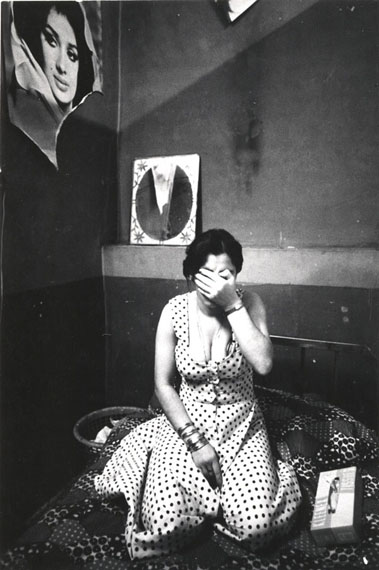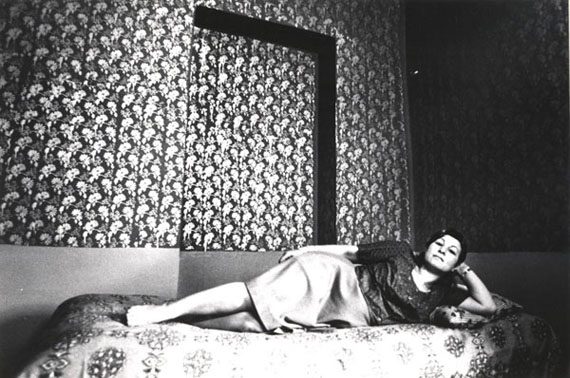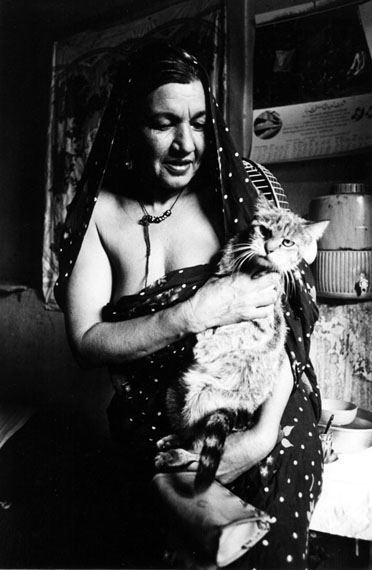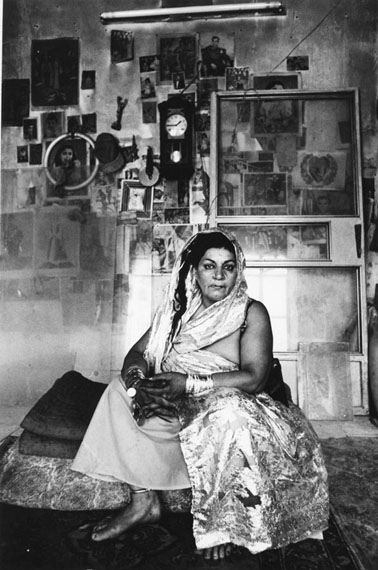
Kaveh Golestan »
The Citadel
Exhibition: 21 Mar – 4 May 2014
foam
Keizersgracht 609
1017 DS Amsterdam
Sat-Wed 10-18 . Thu, Fri 10-21

Foam Fotografiemuseum Amsterdam
Keizersgracht 609
1017 DS Amsterdam
+31 (0)20-5516500
pressoffice@foam.org
www.foam.org
Mon-Wed 10-18; Thu-Fri 10-21; Sat-Sun 10-18

Kaveh Golestan (1950-2003) was an important and prolific Iranian documentary photographer and a pioneer of street photography. His photographic practice has hugely informed the work of future generations of Iranian artists but has remained seriously over-looked in Europe. Kaveh Golestan - The Citadel presents 45 vintage photographs from the series entitled Prostitute taken between 1975-1977 of women working in the Citadel of Shahr-e No, the red light district of Teheran. The photographs will be exhibited for the first time as a vintage set since 1978. Alongside the photographs, the exhibition will include original diaries of Golestan, newspaper clippings and audio interviews that he collected from and relating to the area.
The Citadel
Shahr-e No (literally translated as 'New City') was an old walled neighbourhood in Teheran, which was accessed through a gate. The inhabitants were women and only men were allowed to visit the Citadel. Kaveh Golestan's record of the area is an important photographic document of this urban space. These images were taken over a period of two years, during which Golestan forged a trustful friendship with many of the residents. The series of portraits Golestan produced are a testament to an intimate, humane gaze into the lives and personalities of the resident women.
Prostitute series
Kaveh Golestan belonged to a very active intellectual and artistic milieu, socially driven and deeply committed to social issues. He published several groups of photographs from his Prostitute series in three extensive essays in the daily Iranian newspaper Ayandegan exposing and drawing attention to the living conditions of the women. In 1978 he exhibited the photographs at the University of Teheran for a short period lasting fourteen days. The exhibition was abruptly shut down, most probably under the pressure of the intelligence services, but without any official explanation. The series was also briefly shown in a sneak exposition in the Seyhoun Gallery stand at the Tehran Art Fair in the same year. This was the last time the vintage photographs were exhibited and they have never been seen again. However, this is not the only reason why this exhibition is of great importance.�

Demolished
The district of the Citadel, photographed by Golestan, was set on fire and demolished within days of the Iranian revolution in 1979 through a decree by Ayatollah Khomeini. Some of the women were tragically charred to death during the blaze and several others were arrested and later faced the revolutionary firing squads in the summer of 1980. The revealing photographs made by Kaveh Golestan are the last traces left of these women and the urban space of the Citadel. The area was flattened and in an act of memory erasure converted into a park which stands today.
Historical events
Besides Shahr-e No, Kaveh Golestan also documented many other major historical events like the conflict in Northern Ireland, the Iranian revolution, The Iran-Iraq War, and the Gulf Wars. In 1979 he was awarded the Robert Capa Gold Medal for "superlative photography requiring exceptional courage and enterprise abroad". He wasn't able to pick up the award until thirteen years later, as by then the work was no longer considered a threat to the Iranian government. While he was on an assignment in Iraq Golestan stepped on a fatal landmine on 2 April 2003. He died in Kifri in Northern Iraq. He was 52 years old. His documentary photographs have mainly been featured in reportages and books and his work has not been exhibited often. The Kunsthal (Rotterdam) showed the exhibition Kaveh Golestan 1950-2003. Recording the Truth in Iran in 2008.
Research project
Kaveh Golestan - The Citadel is curated by Vali Mahlouji as the first iteration of an on-going curatorial and research device entitled ARCHAEOLOGY OF THE FINAL DECADE. This larger project investigates the artistic milieu and intellectual conditions of the final decade before the fall of the shah in 1979 - the pre-revolutionary moment - in Iran. The project re-circulates and reincorporates historical and cultural material - destroyed, banned or under-represented, yet historically significant - back into cultural memory and discourse.�
